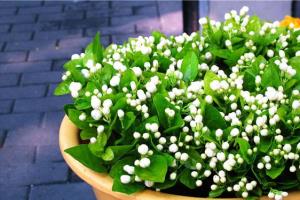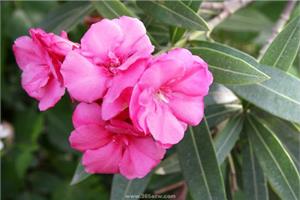Cultivation techniques of Violet

Cultivation methods of Violet
Violet, also known as Violet, sweet-scented osmanthus, cantaloupe pair, is an annual or biennial herb of Cruciferae, with a height of 20 to 40 meters, the whole plant is gray-white tomentose, leaves alternate, long oval or oblanceolate, apex obtuse, base attenuate, green. Racemes terminal or axillary, flowers have single, double, rich colors, there are pure white, yellowish, bright yellow, light red, red, purple and complex color, and has a strong fragrance. After flowering, there are cylindrical siliques with white membranous winged seeds, the roots of the seeds are long, and the germination power can be maintained for 4 months to 6 years.
Sowing and propagation in autumn, the optimum temperature for germination was 16-18 ℃, and germinated in about 4 days. Overwintering in a cold bed, planting in the open field in the following spring, flowering around May 1, annual varieties, can be sown in four seasons in cool areas in summer, and can provide flowers every year. Cultivation should not be too dense, and attention should be paid to fertilization during the growth period. If properly maintained, it can blossom in mid-April.
Violet is native to southern Europe and likes cold climate. the suitable temperature for flower bud differentiation is 15 ℃. It is not strict with the soil, but it is well drained. The neutral soil grows better, and the strongly acidic soil is avoided. Fertilization should not be excessive in cultivation, so as not to overgrow the plant, which is disadvantageous to flowering. Violet leaves are thick, the number of stomata is less, and the whole plant is tomentose and has a certain resistance to drought, so watering should not be too much, the soil can be kept moist, too much water will rot the roots.
Violet is propagated by sowing method, because the pistil and stamen of its double variety are degenerated and cannot bear fruit, so the seeds must be collected on the single-petal plant of the same variety. After the seeds were sown, 60% to 80% of the seedlings were double plants. There are some differences between the seeds and seedlings of the double variety and the single variety: the seed particles of the double variety are smaller, the cotyledons are long oval, and when the true leaves are 7 ~ 8, the leaf margin is more serrated, while the seeds of the single variety are larger and full. the cotyledons are short oval, and the true leaf margin is less serrated.
The sowing time of violets is generally from mid-late August to early October, about 10 days after sowing, pay attention to cold prevention in winter, and the seedlings can also be potted in the greenhouse or planted on the seedling bed at the end of autumn. Because it is a taproot plant, not resistant to transplanting, transplanting must take more soil, not loose tuo, as little as possible to hurt the root, once the root injury is not easy to recover. After a transplant, the seedlings can be planted and can blossom in May of the following year. In addition, the flowering date can also be adjusted according to the morning and evening of the sowing date, such as sowing in February and flowering in May, sowing in April, flowering in July, sowing in late May and flowering in August. The suitable sowing temperature is 16 ℃ ~ 18 ℃, and it should not be too dense, otherwise the seedlings are easy to suffer from quenching disease.
Violet has a wide variety, rich colors, many and luxuriant flowers, and has a strong fragrance. It is a good material for cut flowers, potted plants and flower beds. Because of its rapid growth, extensive management and strong self-sowing ability, it is often used to fill the gap of green space.
Related
- Wuhan Hospital Iron Tree Blooming Result Was Instantly Frightened by the Gardener Master
- Which variety of camellia is the most fragrant and best? Which one do you like best?
- What is the small blue coat, the breeding methods and matters needing attention of the succulent plant
- Dormancy time and maintenance management of succulent plants during dormancy
- Minas succulent how to raise, Minas succulent plant pictures
- What are the varieties of winter succulent plants
- How to raise succulent plants in twelve rolls? let's take a look at some experience of breeding twelve rolls.
- Attention should be paid to water control for succulent plants during dormant period (winter and summer)
- Watering experience of twelve rolls of succulent plants
- Techniques for fertilizing succulent plants. An article will let you know how to fertilize succulent plants.



